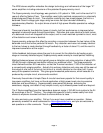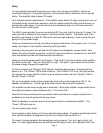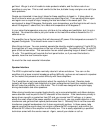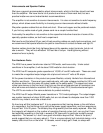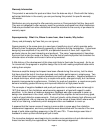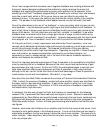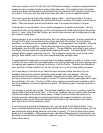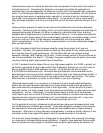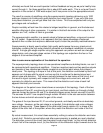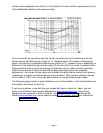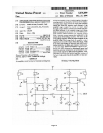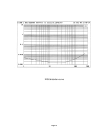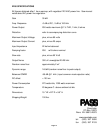Page 4
get fixed. We go to a lot of trouble to make products reliable, and the failure rate of our
amplifiers is very low. This is small comfort to the few, but take it easy and give us a call if you
have problems.
People are interested in how long it takes for these amplifiers to break in. It takes about an
hour for them to warm up, and this is where we adjust them first. Then we adjust them again
and again over a couple of days, keeping the bias and offset in the sweet spot. Our
environment is about 23 degrees Centigrade, room temperature, and the heat sinks will rise to
about 25 degrees C. above that, for a heat sink temperature of 48 degrees C.
In your setup the temperature may vary a bit due to line voltage and ventilation, but it is not a
big deal. You should be able to put your hands on the heat sinks without discomfort for 10
seconds or so.
The amplifier has a thermal cutout that will disconnect AC power if the temperature exceeds 75
degrees Centigrade. This should never occur in real life.
More things to know: You can remotely operate the stand-by mode by applying 12 volts DC to
the single pair of 5 way connectors on the rear of the amplifier. The positive of the 12 volts DC
goes to the red connector. This connection has an actual operating range of about 9 volts to
15 volts. This switching will override the front panel button, so if you want the button to
operate, leave the rear connection open.
So much for the most essential information.
Speaker Interface
The X250 is optimized for loads nominally rated at 4 ohms and above. You can run the
amplifiers into a lower nominal impedance without difficulty, and we are not aware of a speaker
on the market that presents unusual difficulty with these amplifiers.
The X amplifiers do not care particularly about the reactivity of the load. Reactive loads
typically will have slightly less distortion at a given voltage/current level than resistive loads,
but will make the amplifier run a little hotter. The X circuit was designed to be quite happy
driving electrostatic and other speakers.
When driving transformer-coupled loads directly, as in some electrostatic and ribbon designs,
some attention must be paid to the DC character of the situation. If the transformer primary is
being driven raw with no protection from DC and your source has DC voltage, or in cases
where the small offset of the power amplifier is still too much, you may create distortion in the
transformer and get less than optimal performance from it. Generally this is not the case with
transformer coupled loudspeakers, but it does occasionally surface. In these cases, take
special care that the source does not contain a differential DC component, and confirm the
differential DC offset of the amplifier is sufficiently low. This is easily adjusted by a qualified
technician armed with the service manual. Again, consult your dealer or call us.




